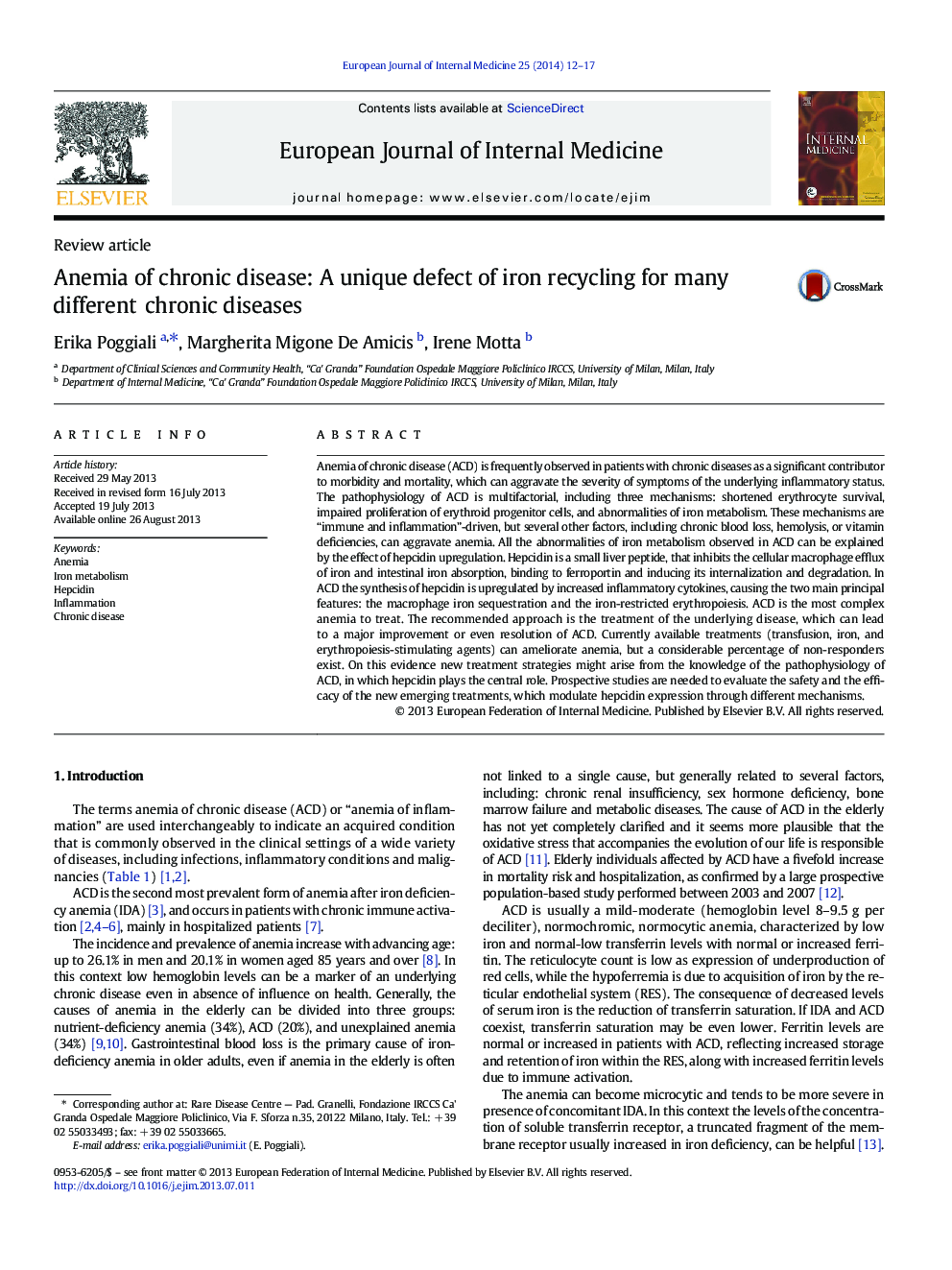| کد مقاله | کد نشریه | سال انتشار | مقاله انگلیسی | نسخه تمام متن |
|---|---|---|---|---|
| 3466240 | 1596559 | 2014 | 6 صفحه PDF | دانلود رایگان |
• Anaemia of chronic disease (ACD) is very common in clinical practise.
• ACD can increase morbidity and mortality of the underlying inflammatory state.
• The pathophysiology of ACD is multifactorial.
• All the abnormalities of iron metabolism can be explained by hepcidin upregulation.
• New treatment strategies will be able to modulate hepcidin expression.
Anemia of chronic disease (ACD) is frequently observed in patients with chronic diseases as a significant contributor to morbidity and mortality, which can aggravate the severity of symptoms of the underlying inflammatory status. The pathophysiology of ACD is multifactorial, including three mechanisms: shortened erythrocyte survival, impaired proliferation of erythroid progenitor cells, and abnormalities of iron metabolism. These mechanisms are “immune and inflammation”-driven, but several other factors, including chronic blood loss, hemolysis, or vitamin deficiencies, can aggravate anemia. All the abnormalities of iron metabolism observed in ACD can be explained by the effect of hepcidin upregulation. Hepcidin is a small liver peptide, that inhibits the cellular macrophage efflux of iron and intestinal iron absorption, binding to ferroportin and inducing its internalization and degradation. In ACD the synthesis of hepcidin is upregulated by increased inflammatory cytokines, causing the two main principal features: the macrophage iron sequestration and the iron-restricted erythropoiesis. ACD is the most complex anemia to treat. The recommended approach is the treatment of the underlying disease, which can lead to a major improvement or even resolution of ACD. Currently available treatments (transfusion, iron, and erythropoiesis-stimulating agents) can ameliorate anemia, but a considerable percentage of non-responders exist. On this evidence new treatment strategies might arise from the knowledge of the pathophysiology of ACD, in which hepcidin plays the central role. Prospective studies are needed to evaluate the safety and the efficacy of the new emerging treatments, which modulate hepcidin expression through different mechanisms.
Journal: European Journal of Internal Medicine - Volume 25, Issue 1, January 2014, Pages 12–17
